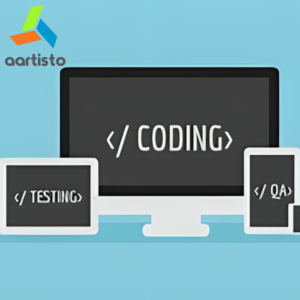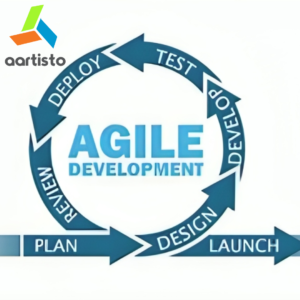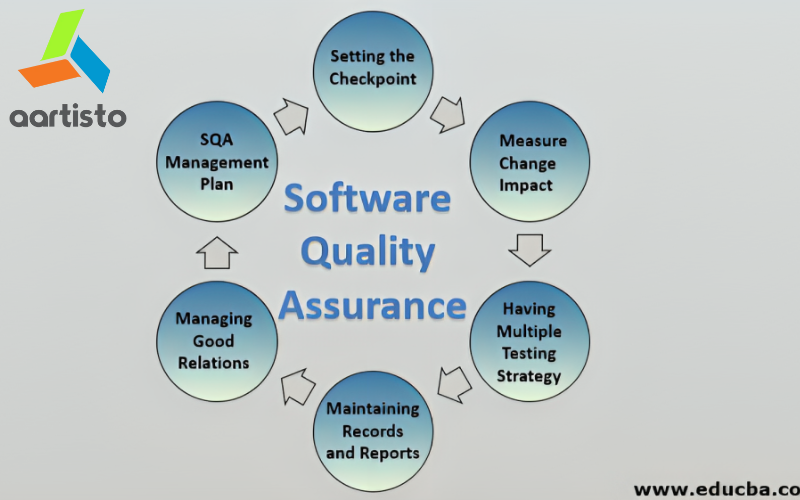The Evolving part of Quality Assurance in Software Development( QA)- 2023
Software development assistance is constantly changing and it’s important to stay ahead of the wind. Quality Assurance( QA) is an essential part of software development, and its part will continue to evolve over the coming many times.
As we move into 2023, it’s important to understand how QA will be acclimated to the ever- changing requirements of software development. In this blog post, we will look at the arising trends and technologies that are transubstantiation the part of QA in software development and the ways these trends will shape the future of QA in 2023.
1.The significance of QA in Software Development
Quality Assurance( QA) is a pivotal aspect of software development that ensures the delivery of high- quality, dependable, and functional software products. In moment’s presto- paced and competitive digital geography, QA plays a vital part in icing client satisfaction, brand character, and business success.
One of the primary reasons why QA is important is because it helps in relating and barring software blights and bugs before they reach the end- users. By completely testing the software at colorful stages of development, QA professionals can catch any issues, vulnerabilities, or inconsistencies that may arise.
This not only enhances the overall stoner experience but also saves time and coffers by precluding expensive rework or fixes in the after stages. also, QA also helps in icing the software meets the needed norms and specifications. It verifies that the software fulfills the willed purpose, meets the customer’s prospects, and complies with assiduity regulations.
By clinging to these norms, QA professionals contribute to the overall integrity, trustability, and security of the software. also, QA is pivotal in minimizing the pitfalls associated with software development. It helps in relating implicit pitfalls and misgivings that may impact the software’s performance or security.
By addressing these pitfalls beforehand, QA professionals can alleviate the impact and help any implicit damage or loss. Likewise, QA plays a significant part in maintaining the brand character and client trust. By delivering high- quality, bug-free software, companies can make a strong character for trustability and client satisfaction. This, in turn, leads to increased client fidelity, positive word- of- mouth, and eventually, business growth.
Traditional part of QA in Software Development The traditional part of Quality Assurance( QA) in software development has been concentrated on icing the quality and trustability of software products before they’re released to end- users. QA professionals have been responsible for completely testing the software at different stages of development to identify and exclude any blights, bugs, or inconsistencies.
In history, QA brigades would generally conduct homemade testing, where they would strictly go through each point, functionality, and element of the software to check for any issues. This involved creating detailed test plans, executing test cases, and logging any blights or issues set up. This traditional approach to QA needed a significant quantum of time and trouble, and frequently redounded in longer development cycles.
Another important aspect of the traditional part of QA was the creation and prosecution of retrogression tests. These tests were designed to insure that preliminarily fixed blights didn’t reappear and that any changes or updates to the software didn’t introduce new bugs. This process helped to maintain the stability and trustability of the software throughout its lifecycle.
Also, QA brigades were also responsible for conducting system integration testing, where they would corroborate that different factors or modules of the software worked seamlessly together. This testing assured that the software was cohesive, and all the intertwined factors worked as anticipated.
2.The Rise of Agile and DevOps in Software Development
The rise of Agile and DevOps methodologies in software development has revolutionized the way software is erected and delivered. These approaches have brought about a paradigm shift in the assiduity, enabling faster development cycles, better collaboration, and enhanced effectiveness. As a result, the part of Quality Assurance( QA) in software development has also experienced significant changes.
nimble development focuses on iterative and incremental development, with the end of delivering working software in shorter time frames. This has led to a more dynamic and flexible approach to QA. Rather than conducting extensive testing at the end of the development cycle, QA is integrated throughout the entire process.
QA professionals work nearly with inventors, sharing in diurnal stage-up meetings and conducting nonstop testing to ensure that quality norms are met at every step. Also, DevOps promotes collaboration between development and operations brigades, fostering a culture of participating responsibility for software quality.
QA plays a vital part in this collaboration, helping to ensure that the software meets functional conditions and can be stationed easily. With automated testing and deployment channels, QA brigades can streamline the testing process, allowing for faster feedback and hastily delivery of updates and bug fixes.
3.Impact of Artificial Intelligence and Machine Learning on QA
Artificial Intelligence( AI) and Machine literacy( ML) are reshaping the field of Quality Assurance( QA) in software development. These technologies are revolutionizing the way software is tested, perfecting effectiveness, delicacy, and scalability in the QA process. AI and ML enable QA professionals to automate colorful aspects of testing, reducing homemade trouble and mortal error.
Through intelligent algorithms, these technologies can dissect vast quantities of data and identify patterns or anomalies that may indicate software blights or vulnerabilities. This not only pets up the testing process but also enhances the discovery of retired or hard- to- find bugs that may be missed by homemade testing.
Also, AI and ML can ameliorate the delicacy of test prognostications and estimations, helping QA brigades allocate their coffers more effectively. By assaying literal data and patterns, these technologies can give perceptivity into the most critical areas to concentrate on during testing, allowing QA professionals to prioritize their sweat and make informed opinions.
Another significant impact of AI and ML on QA is in the realm of test robotization. These technologies enable the creation of intelligent test scripts that can acclimatize and tone-correct grounded on the changing conditions or the evolving software.
By using AI and ML, QA professionals can develop robust and effective test robotization fabrics that are more flexible to changes in the software, reducing conservation sweats and perfecting overall test content.
Likewise, AI and ML can help in the generation of realistic test data, which is pivotal for comprehensive testing. By assaying data sets and stoner geste patterns, these technologies can induce synthetic data that nearly resembles real- world scripts. This allows QA professionals to conduct more realistic and effective testing, icing that the software performs optimally in colorful stoner situations.
4.The Growing Emphasis on Stoner Experience( UX) Testing
As technology continues to evolve, the focus on stoner experience( UX) testing has become increasingly important in the field of Quality Assurance( QA) in software development. Stoner experience refers to the overall satisfaction and usability that individuals have when interacting with a software product.
In the moment’s competitive digital geography, businesses are feeling the value of furnishing an exceptional stoner experience to attract and retain guests. Stoner experience testing involves assessing the software from the perspective of the end- stoner to ensure that it’s intuitive, visually appealing, and easy to navigate.
It focuses on understanding the users’ requirements, preferences, and prospects to optimize the software’s design and functionality. By incorporating UX testing into the QA process, associations can identify any usability issues or pain points that users may encounter, and make necessary advancements to enhance their overall experience.
One of the crucial aspects of UX testing is conducting usability testing, which involves observing users as they interact with the software and gathering feedback on their experience. This feedback can help identify areas for enhancement and give perceptivity into how the software can more meet the requirements and prospects of the users.
In addition to usability testing, UX testing also includes other methodologies similar as stoner checks, stoner interviews, and stoner personas. These styles allow QA professionals to gain a deeper understanding of the users’ provocations, actions, and preferences, which can inform design opinions and contribute to a further stoner- centered software development process.
With the growing emphasis on UX testing, QA professionals need to retain a strong understanding of stoner experience principles and methodologies. They must work nearly with contrivers and inventors to ensure that the software isn’t only functional and dependable but also provides a flawless and pleasurable stoner experience.
5.part of QA in icing Cybersecurity and Data sequestration
As technology continues to advance, icing cybersecurity and guarding data sequestration have become critical enterprises in software development. Quality Assurance( QA) plays a pivotal part in this aspect by enforcing robust testing practices to identify vulnerabilities and strengthen the security measures of software products.
QA professionals are responsible for conducting thorough security testing to descry any implicit sins or loopholes in the software. They employ colorful ways similar to penetration testing, vulnerability scanning, and law review to identify security excesses and ensure that the software is resistant to attacks.
likewise, QA brigades work nearly with inventors to apply secure coding practices and integrate security measures throughout the software development lifecycle. They unite to address any security vulnerabilities linked during testing, icing that the software meets the loftiest norms of security and data sequestration.
also, QA professionals play a vital part in compliance with data protection regulations, similar as GDPR or CCPA. They insure that the software handles and protects stoner data in agreement with the needed norms, enforcing encryption, access controls, and other security measures as necessary.
By incorporating comprehensive security testing and adherence to data sequestration regulations, QA helps to guard stoner information and alleviate the threat of data breaches or cyber attacks. Through their sweats, QA professionals contribute to maintaining stoner trust, guarding sensitive information, and icing the overall security of software products.
Conclusion:
In this blog post, we’ve explored the evolving part of Quality Assurance( QA) in software development and how it’s conforming to the ever- changing requirements of the assiduity. We’ve seen how QA plays a pivotal part in icing the delivery of high- quality, dependable, and functional software products.
Also Read: Explore how artificial intelligence is transubstantiation and hunt machine optimization( SEO) ways.
Also Read: Scripting the Future of Content Creation with AI Writing Assistants
